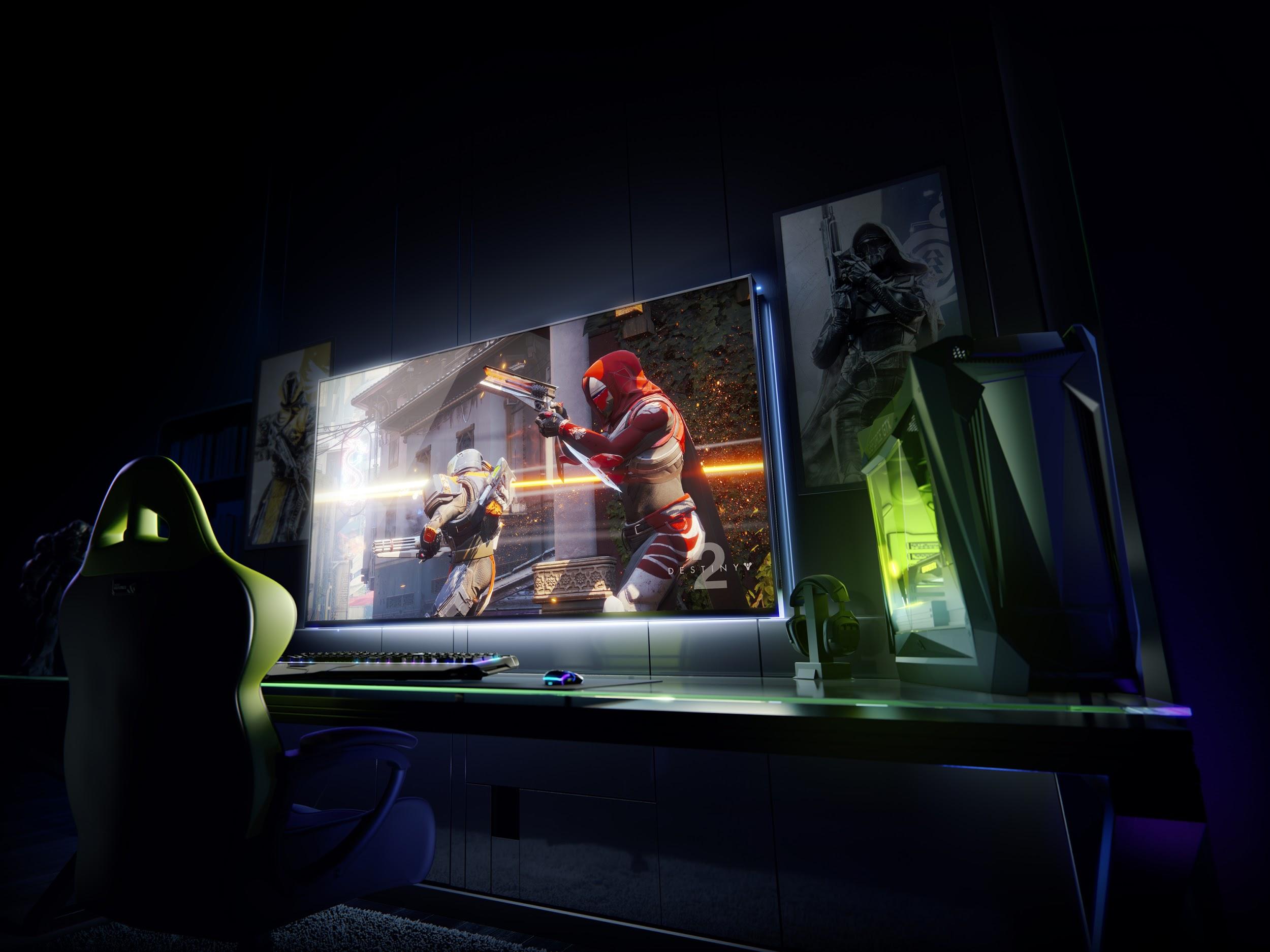Nvidia Pushes G-Sync To TVs With 'Big Format Gaming Display' Initiative
LAS VEGAS, NV -- At its CES 2018 press conference, Nvidia announced a new initiative/product category--G-Sync TVs.
In what is possibly a Doom reference, the big format gaming display (BFGD) initiative will consist of new products from Acer, Asus, and HP. Each will be offering their own take on a 65-inch G-Sync enabled 4K TV with embedded Nvidia Shield streaming. The displays will be HDR-capable thanks to a 120Hz refresh rate, DCI-P3 color gamut, and full-array backlighting with 1,000-nit peak brightness.
The products will all have Nvidia Shield embedded, and that essentially provides the TV functionality to the display. Shield implements Android TV, so beyond allowing PC game streaming from your gaming rig, it provides traditional TV content like Netflix and Youtube. Also, by marrying G-Sync and Shield, Nvidia is aiming to provide a better movie experience for content across a range of framerates.
TVs often have a fixed 60Hz or 120Hz refresh rate, but movies commonly have 23.976, 24, or 25 fps frame rates. The mismatch means that traditional televisions have to rely on different interpolation techniques to make movies play smoothly. G-Sync is going to let all movies play at the native frame rate, eliminating the need for any processing.
This announcement is similar to Nvidia’s CES 2017 G-Sync HDR announcement. Apparently, Acer, Asus, and HP will all create what is essentially the same product for almost the same price, but with different exterior designs. Similar to the case of the Acer Predator X27 and Asus PG27UQ--both of which we’re still waiting for because both were delayed--we don’t expect to see these products hit the shelf for a while.
We’ll learn more when we see the actual products being demoed at the OEMs respective booths.
Get Tom's Hardware's best news and in-depth reviews, straight to your inbox.
